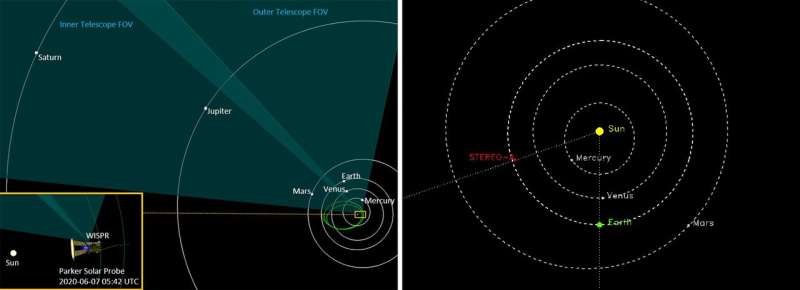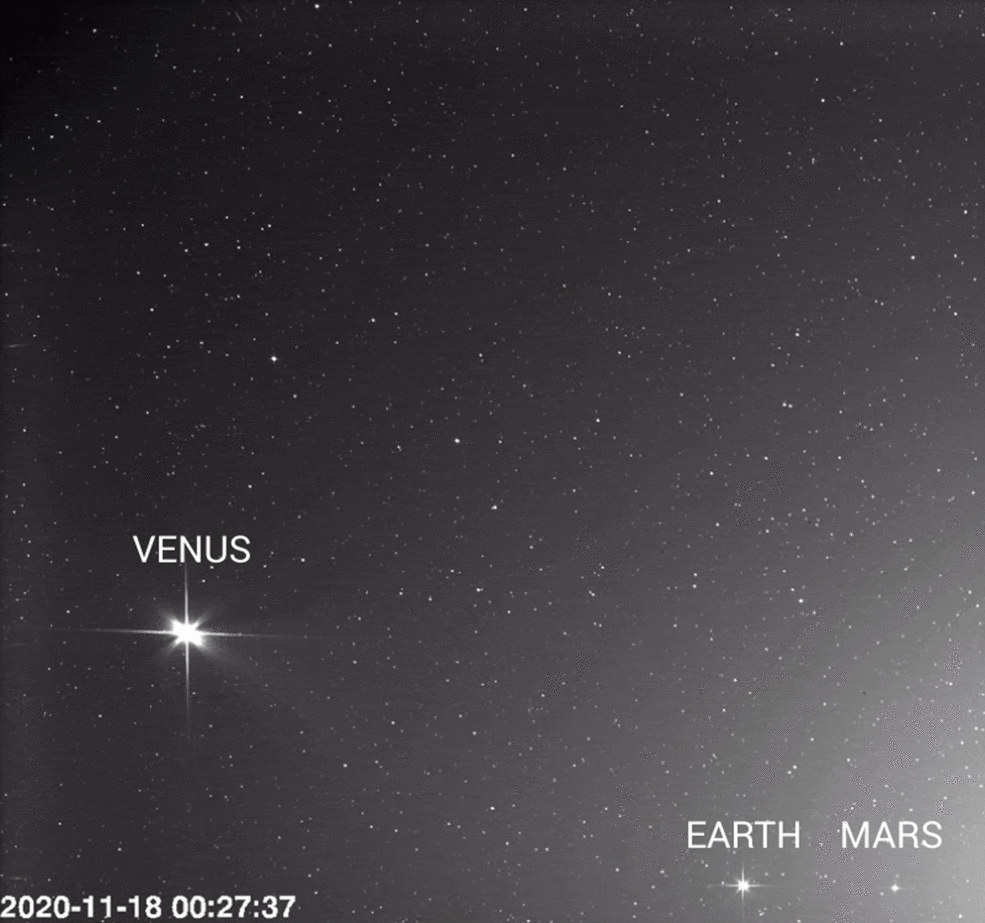Each of the three missions has a distinct orbit, so their perspectives are different from both ours here on Earth and from each other. This is reflected in each spacecraft's view of the planets, which show the bodies in different positions than what would have been seen from Earth and from the other spacecraft on those dates.
Looking back towards home from about 155.7 million miles (250.6 million kilometers) away, the Solar Orbiter Heliospheric Imager, or SoloHI, aboard ESA and NASA's Solar Orbiter spacecraft captured Venus, Earth, and Mars together on Nov. 18, 2020. The Sun is located on the right, outside the image frame.
Launched in February 2020, Solar Orbiter returned its first images in July 2020, including the closest-ever view of the Sun. SoloHI, one of ten instruments on the spacecraft and the only heliospheric imager, looks off to the side of the Sun to capture the solar wind and dust that fills the space between the planets.

As Parker Solar Probe wheeled around the Sun on June 7, 2020, its Wide-field Imager for Solar Probe instrument, or WISPR, snapped two image frames that captured six of our solar system's planets: Mercury, Venus, Earth, Mars, Jupiter, and Saturn.
WISPR captures images of the solar corona and inner heliosphere in visible light, along with images of the solar wind and other structures as they approach and pass the spacecraft. The spacecraft was approximately 11.6 million miles (18.7 million kilometers) from the Sun, and about 98.3 million miles (158 million kilometers) from Earth, when WISPR gathered the images.
NASA's Solar and Terrestrial Relations Observatory, or STEREO, captured this view of most of our solar system's planets on June 7, 2020. Though this image was taken around the same time as Parker Solar Probe's, STEREO's position in the solar system gave it a different perspective on the planets. This image is from one of the Heliospheric Imagers on STEREO, which views the outer atmosphere of the Sun, the corona, and the solar wind, allowing scientists to study how solar material travels out into the solar system. The dark columns in the image are related to saturation on the instrument's detector, caused by the brightness of the planets combined with the long exposure time.
Explore further



